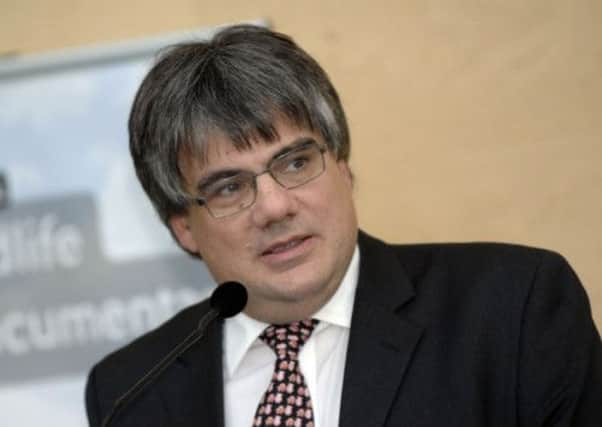Ian Marchant says planners must use technology


Marchant, who stood down from the Perth-based utility firm last month, wants local councils and other planning authorities to “harness the power” of technology to speed up decisions.
He said: “The planning guidelines need to recognise the power of digital processes. It has got to happen. It is such an obvious and huge advance.”
Advertisement
Hide AdAdvertisement
Hide AdMarchant’s comments came as he pumped a “reasonably significant sum” into Linknode, a Stirling-based start-up that has developed a mobile phone application to cut the cost of building wind farms. He is also taking a seat on the company’s board as a non-executive director.
Linknode’s app, VentusAR, uses technology in mobile phones, such as GPS systems, to create an instant 3D image of what a site would look like after a wind farm is built. It can produce images from any vantage point, showing homeowners and businesses how their views will be affected.
Marchant said the app will allow for “an informed debate” when development proposals are put forward, thus speeding up the planning process. “One of the biggest issues for developers is people complaining about what a wind farm will look like, without knowing what the wind farm will look like from the particular point they are interested in,” he said.
As VentusAR is also cheaper to use than photo-montage, Marchant said it should be allowed to replace the computer-aided images now required for planning consent. This “digital equivalency” could come about within the next 18 months.
Scottish Natural Heritage, the Scottish Government’s advisory body, is reviewing responses to a consultation to produce guidance to improve the standard of wind farm visualisations.
Joss Blamire, senior policy manager for trade body Scottish Renewables, said partners including the Scottish Government, the Landscape Institute and local authorities were hopeful of reaching an agreement on the best way forward.
“As technology develops we hope that digital solutions will be able to help with the official planning process,” Blamire said. “In the meantime, digital platforms, CGI fly-throughs and 3D modelling might be used as accessible forms of visual representations, especially when developers interact and discuss projects with local communities.”
Marchant said he became interested in Linknode last year, when he sat on the judging panel of the SME EnviroApp competition on behalf of SSE. Although he was outvoted when he wanted to give the top prize to Linknode, he remained in touch with founder Crispin Hoult. “Small companies like Linknode can have a global outreach and a route to millions of customers from an internet connection in Scotland,” Marchant said.
Advertisement
Hide AdAdvertisement
Hide AdLaunched in May, VentusAR is being tested in the field by companies in the renewables sector.
Linknode’s second product, HistoryLens, uses the same technology to provide location-based context to historical objects. This could put a sculpture in a museum back into its original historical setting, or produce a scene from the 1700s while walking down Edinburgh’s Princes Street.